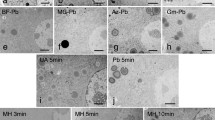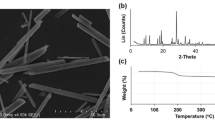Abstract
IT has been claimed by several workers1,2 that thioflavine-T is more sensitive and consistent than congo red and methyl violet as an amyloid stain. Vassar and Culling3 found no substances which gave false positive reactions apart from myeloma casts and keratin, which do not present a diagnostic problem. McAlpine, Radcliffe and Friedman4 support these findings but point out that no extensive control investigation has been carried out on ‘hyaline’ substances with thioflavine-T.
This is a preview of subscription content, access via your institution
Access options
Subscribe to this journal
Receive 51 print issues and online access
$199.00 per year
only $3.90 per issue
Buy this article
- Purchase on Springer Link
- Instant access to full article PDF
Prices may be subject to local taxes which are calculated during checkout
Similar content being viewed by others
References
Vassar, P. S., and Culling, C. F. A., Arch. Path., 68, 487 (1959).
Hobbs, J. R., and Morgan, A. D., J. Path. Bact., 86, 437 (1963).
Vassar, P. S., and Culling, C. F. A., Arch. Path., 73, 59 (1962).
McAlpine, J. C., Radcliffe, A., and Friedman, I., J. Laryngol., 77, 1 (1963).
Culling, C. F. A., Handbook of Histopathological Techniques, 494 (Butterworth, London, 1963).
Author information
Authors and Affiliations
Rights and permissions
About this article
Cite this article
MCKINNEY, B., GRUBB, C. Non-specificity of Thioflavine-T as an Amyloid Stain. Nature 205, 1023–1024 (1965). https://doi.org/10.1038/2051023b0
Published:
Issue Date:
DOI: https://doi.org/10.1038/2051023b0
This article is cited by
-
Zur Frage der Amyloidablagerung im menschlichen Hoden
Archiv f�r Klinische und Experimentelle Dermatologie (1970)
-
Die Amyloidosen
Klinische Wochenschrift (1967)
-
Amyloidosis in Mice with a Transplantable Plasma Cell Tumour
Nature (1966)
Comments
By submitting a comment you agree to abide by our Terms and Community Guidelines. If you find something abusive or that does not comply with our terms or guidelines please flag it as inappropriate.



